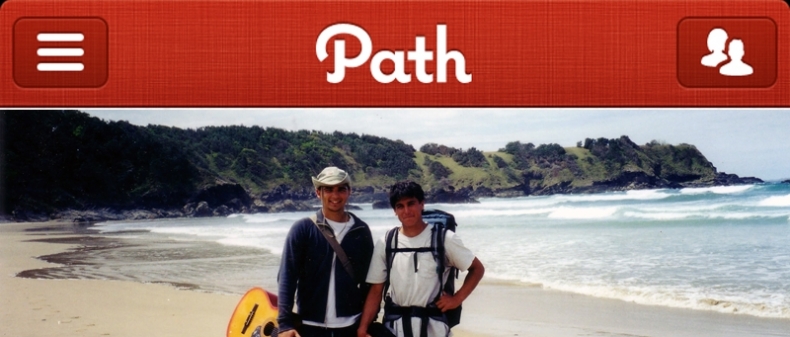
Path should be the next big thing in social media. You will note that’s not the same as saying the “smart journal” app will be the next big thing. I’m simply suggesting that, if the world were a better place, Path would be the next Twitter or Facebook.
Unfortunately, that’s unlikely to happen.
For what it’s worth, Path is the most recent of a long line of much-talked about social media services. It first made waves in late 2010, when it launched as a photo-sharing app replete with an almost defiant design decision: it limited you to 50 contacts, which flew in the face of conventional internet wisdom. Perhaps as a result, it did okay, but didn’t exactly light the world on fire.
But with the relaunch of the app as version 2.0, it grew from photo-sharing to something like “lifestreaming.” In addition to expanding the contact list to 150, it now includes status updates, location check-ins and other conventional features, all of which make it a way to produce an ongoing journal of your life. What it retained from the original app was the focus on a small, intimate network of people who mostly know each other. It amassed new users at an impressive rate, and has now reached two million users just a couple of months after the redesign. And if I had my way, Path would be the future of social apps.
I say this because there are two general schools of thought when it comes to apps and social media. One, influenced by years of inflated 2.0 hype, asks what practical value a service offers users. Local blogger and consultant Mark Evans hammers away at this point, and dislikes apps like Foursquare until they provide some clear, practical value. The other view, also affected by the flood of new apps in recent years, argues something else: that tech and social media should be a way to focus in on the human, allowing us to engage with each other and ourselves in ways that simply weren’t possible before. For my money, Path works because it focuses on the latter.
If you were to shoot a cheesy video promoting Path, it’d probably go like this: hazy shots of some model’s French press and newspaper on a Sunday morning, along with a “Looks great!” comment from a friend; a check-in at a brick-walled, craft-brew selling local with the requisite shot of lunch and pint; and a an evening snuggling on a couch with an improbably attractive partner and a status update on Path. It’s terribly schmaltzy, but you get the idea.
Yet the cheesiness also belies something else about the urge to use social media. Narratives are the way people make sense of the world and make sense of themselves. Apps like Path, Foursquare and Twitter excel at helping us collect and share those stories we tell about our lives to our loved one and ourselves. They give a place to our identities in quasi-public space. In the process, they end up inadvertently resisting some of the more pernicious, ‘business-y’ aspects of the web because, as their founders plan one thing, we end up using them for quite another.
Does Path have a business plan? Who knows? I know the team behind it just picked up another $8 million in funding. But part of me wishes I didn’t care. Like Twitter, it’s tough to imagine it’ll be the same, welcoming place, once the funding runs out and cold hard realities of staying afloat set in. It’s already started to happen. Mat Honan was right when he said that the new version’s capacity to link out to other services makes the service less intimate and more ripe for self-promotion.
But then, this is the tension on our new, shiny, Facebook-ified internet. Companies want to monetize social interaction. This is why Zuckerberg and even the team at Twitter have started to mould user behaviour into more financially viable channels. Meanwhile, all we want to do is tell stories–inscribing miniscule parts of ourselves on the shifting, diaphanous clouds of the collective ether. It’s why, in a perfect world, Path would simply stay as it is and let us do our thing, writing out our personal narratives in a digital version of ink that fades a few hours later in the sun.
It won’t, of course. It will fall on the altar of “venture capital returns”. That’s just the way these things go. The trick, I think, is to enjoy them while they last: to revel in our temporary digital Edens, until the snake comes round and we, nodding in inevitability, eat from the same tree that once looked so inviting.
Navneet Alang is Toronto Standard’s tech critic. Follow him on Twitter at @navalang.
For more, follow us on Twitter at @TorontoStandard and subscribe to our newsletter.














